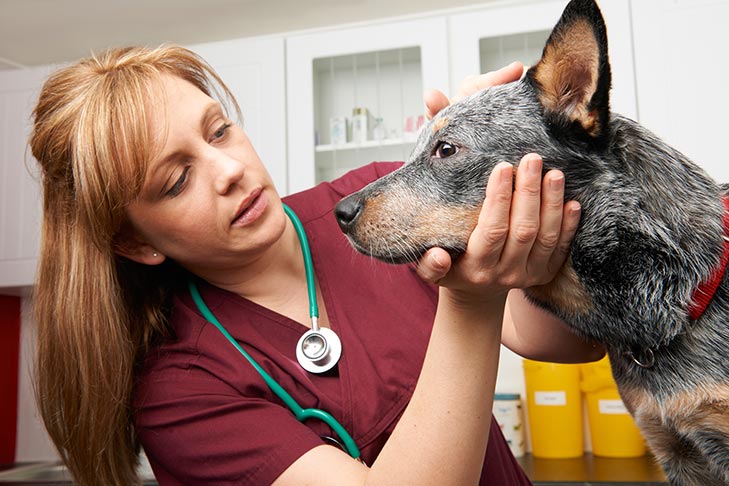
by Claire Wiley, VMD, DACVIM (Small Animal Internal Medicine)
Executive Director, AKC DNA Program
Since the domestication of dogs, breeders have been striving to produce better dogs every generation to suit their needs. In the modern era, this goal encompasses breeding dogs with structure and temperament close to the breed standard, but also improved health and performance for specific tasks. Many of these judgements rely on astute observation and clear record-keeping to track lines and pedigrees over time. Breeders have become their own scientists, making educated guesses about which lines will suit their needs. Some guesses pan out beautifully, whereas others flop. With advancements in technologies, our tools for predicting important traits are improving astronomically fast, and it can be difficult for breeders to keep track of the science and changes. This article aims to provide a basic overview of available genetic tests, with brief insights into their benefits and limitations. Currently there are several fundamental uses of dog DNA: DNA profiling, DNA-based disease and trait testing, DNA-based ancestry testing, and DNA banking.
The Canine Genome
The canine genome was first mapped in 2005 and was based on one dog, a boxer named Tasha.1 Contained in 78 chromosomes and thousands of genes, it is important for dog owners and breeders to understand that our knowledge of the genome is constantly evolving. Multiple versions of the genome exist as technology improves, but there are still regions that are poorly understood. With the Dog 10k genomes project underway, thousands of dogs are getting sequenced to deepen our understanding of canine genetics.
DNA Sampling
Many different techniques can be used to sample DNA from a dog, and each option has variations in quality and significance. A blood sample is often used as the gold standard for high quality DNA but require a veterinarian to collect. Diseased white blood cells can also acquire mutations during the life of the dog, known as somatic mutations. DNA collected from cheek swabs are used routinely and are easy for owners to collect. However, this DNA can be contaminated with DNA from bacteria, or even other dogs when nursing or licking other animals. The quality tends to be lower and more variable than DNA from blood. Other samples can be used to collect DNA as well, such as urine, biopsies, or tissues collected during autopsy.
DNA Profiling – Parentage
The primary use of canine DNA profiling is to validate parentage. Parentage panels rely upon sets of standardized markers used to establish unique dog identities. The markers vary based on the panel and are not interchangeable. The AKC parentage program has over one million dogs profiled to provide reliable parentage results. This service is important for validating breeder records, and its significance increases as DNA testing broadens. Genetic health test results can be linked with parentage results to ensure accuracy of test results.
DNA-based Disease and Trait Testing
Disease and trait tests involve collecting DNA and screening for genetic variants related to a specific disease or trait. Many of these tests were developed based on close partnership between parent club organizations and scientists. Some of these tests are easy to interpret with understandable definitions of affected and clear dogs. Others, however, have “incomplete penetrance,” so the presence of a disease-related variant does not always result in disease. For these diseases, an understanding of the prevalence of that affected variant in the population can help breeders decrease the number of dogs with this trait in the future. Elimination of all affected dogs in a breed is not always recommended, as it can result in loss of genetic diversity. Other traits that are beneficial to the breed may be lost as a detrimental trait are bred out. Careful breeding requires education about that trait, especially within the context of a specific breed from a trusted resource. The AKC is expanding our efforts to help breeders use these tools to make educated decisions.
DNA-based Ancestry Testing
Some commercial companies are offering DNA-based ancestry testing based on a library of samples to determine breed or geographical ancestry. These tests are often used by mixed breed owners who are curious about which purebreds are in their dog’s ancestry. Like other human ancestry tests, the library of samples that is used to determine ancestry is based on owner-reported data, which can be flawed. These tests should be used for curiosity regarding the ancestry of a dog of unknown heritage and not as a purity test for purebred dogs.
DNA Banking
Lastly, DNA can and should be banked for future testing as technology improves. However, banking is futile without meticulous records for traits that breeders are interested in, such as structure and health. Paired with a semen sample, banking can provide a valuable resource for breed preservation as well. The AKC is building a Purebred Preservation Bank that not only banks DNA, but also preserves semen to maintain genetic diversity for the future. Additionally, the AKC is collecting DNA from detection dogs while tracking their performance records to establish a robust database linking genetic information and performance. In the future, we may be able to develop genetic profiles that predict working success.
Ultimately, it is important to remember that these genetic tests are part of the intricate puzzle pieces that comprise the entire dog. They are tools to help breeders accomplish what they have been excelling at for generations. Just like every tool, the reliability depends on the quality of the test and an understanding of their limitations. The AKC is a reliable resource for breeders to come find those trust-worthy answers. For more information on which tests are recommended for your specific breed, please go to: www.akc.org/breeder-programs/breed-health-testing-requirements/
- Lindblad-Toh, K., Wade, C., Mikkelsen, T. et al.Genome sequence, comparative analysis and haplotype structure of the domestic dog. Nature 438, 803–819 (2005). https://doi.org/10.1038/nature04338

